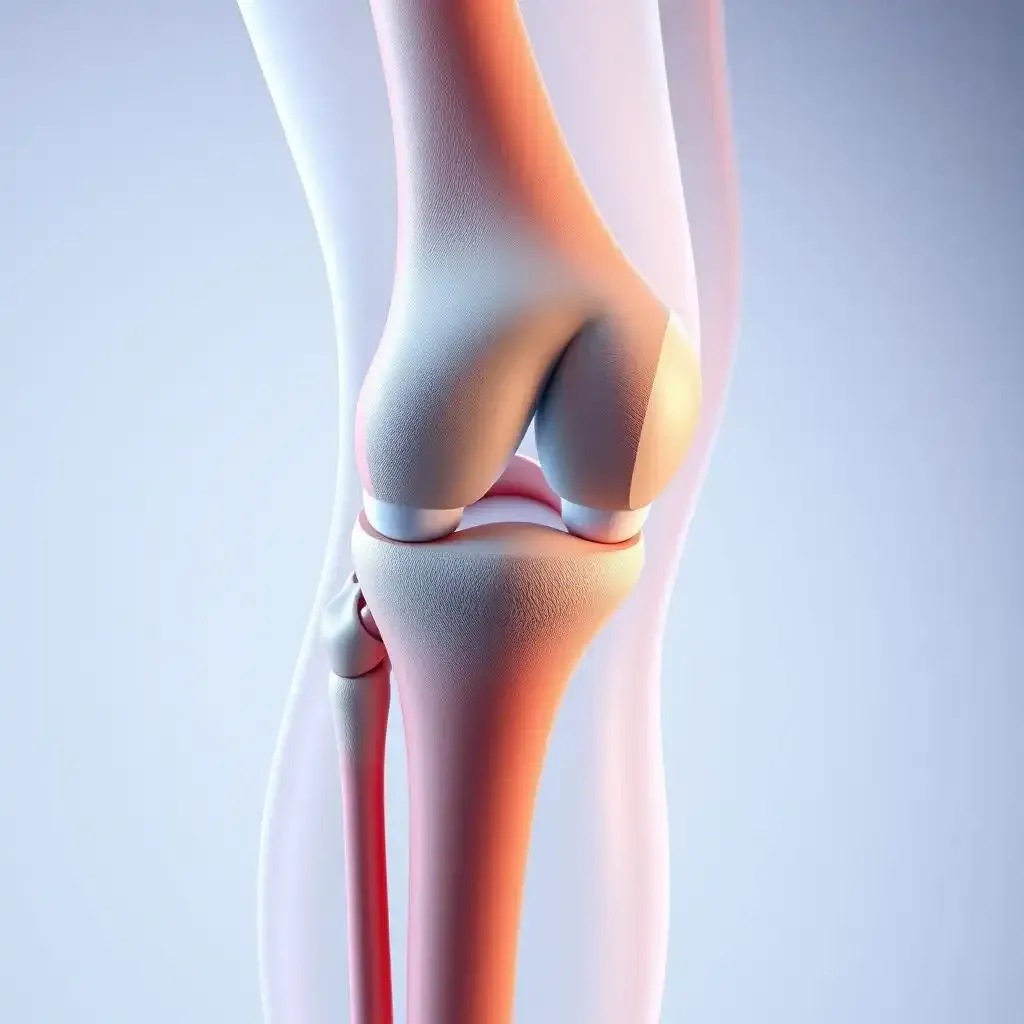Table of Contents
Knee pain: It's a common problem, affecting people of all ages. From a simple twist to a serious condition, that nagging ache in your knee can really put a damper on things. But don't worry, you're not alone! Millions experience knee pain every year. This comprehensive guide from kizworld will help you understand the various causes of knee pain, explore effective self-care strategies, and know when it's time to seek professional medical advice. We'll cover everything from simple home remedies to understanding when your knee pain needs more serious attention. Whether it's a minor discomfort or a significant injury, this article will equip you with the knowledge and tools to guide your knee pain trip. So, let's explore in and get you moving comfortably again!
Knee Pain Issue | Possible Causes | Home Remedies | When to See a Doctor |
|---|---|---|---|
Sharp, sudden pain | Injury (ligament tear, fracture) | RICE (Rest, Ice, Compression, Elevation) | Immediate medical attention |
Aching, persistent pain | Arthritis, overuse | Gentle exercise, pain relievers (ibuprofen, acetaminophen), heat or cold packs | If pain worsens or persists after a week |
Swelling, stiffness | Arthritis, infection | Elevation, compression, anti-inflammatory medication | If swelling is severe or accompanied by fever |
Locking or giving way | Meniscus tear, ligament injury | Avoid weight-bearing | Immediate medical attention |
Pain after activity | Overuse, muscle strain | Rest, stretching, ice | If pain is severe or doesn't improve |
Understanding Knee Pain: Causes and Symptoms
Understanding Knee Pain Causes And Symptoms
What's Going On In There?
Hey there, fellow knee-pain investigator! Let's talk about what causes this pesky problem. Imagine your knee as a super-cool, complex machine – it's got all sorts of moving parts working together perfectly. But, if something goes wrong in this amazing machine, like a tiny gear gets jammed, you'll get knee pain. This can happen due to injuries, like twisting your knee awkwardly during a soccer game (ouch!), or from things like torn ligaments – those strong bands that hold your knee bones together. It can also be caused by wear and tear over time. Think of it like an old car – after many miles, things start to wear down. This is similar to what happens with osteoarthritis, a common type of arthritis that affects the knee joint. Sometimes, infections or other health issues can affect your knee, too. It's like a domino effect – one thing goes wrong, and it affects other parts of your knee.
Common Cause | What Happens | Example |
|---|---|---|
Injury | Ligaments or cartilage tear | Twisting your knee while playing sports |
Arthritis | Joint inflammation and wear and tear | Osteoarthritis, a common type of arthritis |
Infection | Bacteria or virus in the knee joint | A cut near the knee that gets infected |
Symptoms: What Does It Feel Like?
So, you've got knee pain – that's not fun! But how can you tell what's going on? Knee pain isn't just one thing; it can feel different depending on what's causing it. Sometimes, it's a sharp, stabbing pain that makes you want to yell "Ouch!" Other times, it's a dull ache that hangs around all day. You might experience swelling, like your knee has become a balloon. Or maybe your knee feels stiff and hard to bend, like a rusty old door hinge. You might even find it hard to put weight on your leg. It's like your knee's shouting, "Hey, give me a break!" The symptoms can vary widely. Some people feel pain only during certain activities, while others have constant pain. It's all about listening to your body and noticing what's happening.
- Pain (sharp, dull, aching)
- Swelling
- Stiffness
- Difficulty bending the knee
- Weakness in the leg
- Clicking or popping sounds in the knee
When Should You Worry?
Now, let's talk about when to take knee pain seriously. Most of the time, minor knee pain goes away on its own with some rest and home treatments. But, if your knee pain is really bad, like a 10 out of 10 on a pain scale, or it's accompanied by other symptoms like fever or redness, you should see a doctor ASAP. Imagine your knee is a warning light on your car's dashboard – if that light is flashing, it's time to get it checked out immediately, right? Don't ignore your body's signals. Also, if your pain lasts longer than a week despite trying home remedies, or if you can't put weight on your leg, it's best to seek professional medical help. A doctor can figure out what's causing your knee pain and help you get the treatment you need. Early diagnosis and treatment can often prevent more serious problems.
"Listen to your body. It's always trying to tell you something." – Unknown
Knee Pain Relief: Home Treatments and SelfCare
Knee Pain Relief Home Treatments And Selfcare
Rest and Ice: Your Knee's Best Friends
Okay, so your knee's acting up. First things first: rest! Think of your knee like a tired puppy – it needs a break. Avoid activities that make the pain worse. This might mean skipping your usual run or taking a break from that intense Zumba class. Instead, chill out – literally. Ice is your knee's new best friend. Wrap some ice in a thin towel (don't put it directly on your skin, that's not cool!) and apply it for 15-20 minutes at a time, several times a day. The cold helps reduce swelling and numbs the pain. It's like giving your knee a mini-vacation from the throbbing. I used to think ice was only for injuries, but it's a total lifesaver for general knee pain too!
Treatment | How It Helps | How Often |
|---|---|---|
Rest | Lets your knee heal | As much as needed |
Ice | Reduces swelling and pain | 15-20 minutes, several times a day |
Gentle Movement and Elevation: The Sneaky Helpers
Now, while rest is important, complete stillness isn't always the answer. Think of your knee as a bicycle – if it sits unused for too long, it gets rusty. Gentle movement helps keep things lubricated and prevents stiffness. Try simple exercises like walking (short distances, at first), gentle knee bends, or some basic stretches. But listen to your body, don't push yourself too hard. Also, try elevating your leg whenever you can. This helps reduce swelling by improving blood flow. Prop your leg up on a pillow or chair when you're relaxing or sleeping. It's like giving your knee a little lift to help drain out any excess fluid. It might feel a bit silly at first, but honestly, it works wonders!
- Gentle walking
- Knee bends (small range of motion)
- Leg elevation
- Stretching (avoid anything that causes pain)
When to See a Doctor for Knee Pain: Seeking Professional Help
Serious Symptoms: When to Seek Immediate Help
Okay, let's be real: some knee pain is a minor annoyance, like a mosquito buzzing around your head. You can swat it away with some rest and ice. But other times, your knee pain screams, "EMERGENCY!" If your knee pain is so intense that it's making you cry, or if you've had a serious injury like a fall or a direct blow to your knee, don't mess around. Get to a doctor or the emergency room immediately! This isn't the time to be tough. This is the time to seek professional help. Think of your knee as a super important part of your body – you wouldn't ignore a broken arm, would you? A severe injury needs immediate care.
- Intense, unbearable pain
- Inability to bear weight on your leg
- Obvious deformity of the knee
- Numbness or tingling in your leg or foot
- Fever or signs of infection (redness, swelling, warmth)
Persistent Pain: When Home Remedies Aren't Enough
So, you've tried the home remedies – rest, ice, gentle movement. You've been a good patient, elevating your leg like a champion. But your knee pain is still hanging around after a week or more. It's not going anywhere. It's like that annoying song you can't get out of your head, except it's in your knee. This is a sign that your body might need a little more help than you can give it at home. Don't feel bad – it doesn't mean you're a failure! It just means your knee needs a professional's touch. It's like taking your bike to a mechanic when it starts making weird noises. A doctor can figure out what's really going on and get you on the right path to recovery.
Worrisome Signs: Beyond the Pain
Sometimes, it's not just the pain itself that's the problem. There are other signs that might indicate you need to see a doctor. If your knee is swollen and looks red or feels hot to the touch, this could be a sign of infection. Or, if you notice your knee is locking up or giving way unexpectedly, this could signal a more serious problem, like a meniscus tear. Don't try to diagnose yourself; it's best to see a professional who can figure out what's happening. It's like having a weird rash – you don't try to treat it yourself, you see a dermatologist. Similarly, unusual signs with your knee warrant professional attention.
Symptom | Possible Issue | Action |
|---|---|---|
Swelling, redness, warmth | Infection | See a doctor immediately |
Knee locking or giving way | Ligament or meniscus tear | Seek medical attention |
Persistent stiffness | Arthritis | Consult a doctor for diagnosis and treatment |
Final Thought
Remember, while this article provides helpful information on knee pain, it's not a replacement for professional medical advice. Always consult a doctor or physical therapist for a proper diagnosis and treatment plan. Taking care of your knees is crucial for maintaining an active and enjoyable life. By understanding the causes, implementing self-care strategies, and seeking professional help when needed, you can effectively manage your knee pain and get back to doing the things you love.